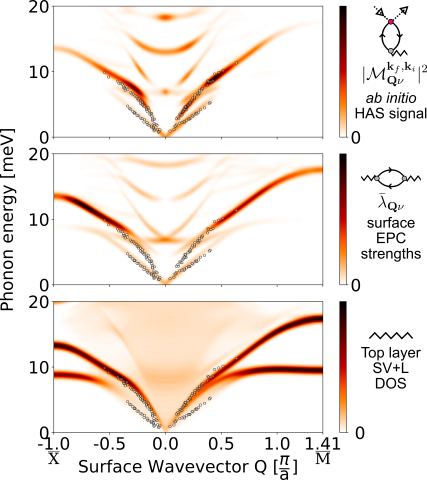Unveiling the Secrets of Atomic Surface Scattering: A Universal Approach from First Principles
In the realm of materials science and surface physics, the ability to understand electronic and atomic interactions at surfaces is essential for unlocking the potential of cutting-edge technologies. A recent groundbreaking study introduces a universal framework, derived fully from first principles, that promises to revolutionize our understanding of inelastic scattering of any atom from any surface and applies this new method to helium atoms scattering from the Nb(100) surface as an initial demonstration.
Atomic and molecular beams provide non-destructive ways to probe surfaces. These low-energy beams of atoms, which do not penetrate or damage surfaces, have opened up new possibilities for investigating a wide range of materials, including delicate biological specimens, polymers, glass, and even reactive or metastable surfaces that were previously inaccessible. However the advantages inherent to these atomic scattering techniques are unfortunately met with challenges.
One of the challenges in this field is accurately predicting and interpreting atomic scattering behavior, which is crucial for guiding experiments and deciphering the resulting measurements. Existing semi-empirical theories often fall short, either downplaying important features or overemphasizing irrelevant ones. Surprisingly, no method that computes scattering of atoms from surfaces directly from first principles has existed until now.
This revolutionary study fills that void by introducing a new, fully first-principles framework by explicitly evaluating the interactions between the scattering atom and the surface electrons. By doing so, this new method corrects misleading results from previous theories and overall provides a more accurate approach for understanding atom–surface interactions.
The significance of this work extends beyond the realm of basic research. It has the potential to impact various fields, including superconductivity, as inelastic helium-atom scattering can reveal electron–phonon interactions that are vital for understanding the properties of superconducting materials.
In essence, this universal ab initio approach promises to transform our ability to study atom–surface interactions comprehensively. By calculating explicit interactions between probe atoms and surface electrons, this research brings us closer to a complete understanding of atomic surface scattering, offering profound implications for a wide range of scientific and technological applications.
Reference:
M. M. Kelley, R. Sundararaman, and T. A. Arias, “A fully ab initio approach to inelastic atom-surface scattering.” arXiv:2306.01892 [cond-mat, physics:quant-ph], Jun. 02, 2023. doi: 10.48550/arXiv.2306.01892. Available: http://arxiv.org/abs/2306.01892

